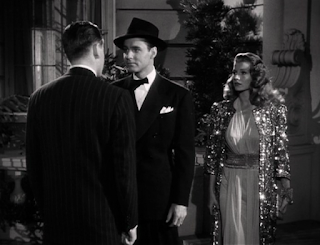The strength of Anomalisa is way Kaufman marries his stop-motion puppet animation to the theme. The film centers on Michael Stone, a middle-aged man mired in an existential mid-life crisis. His world is filled with banality and repetition; nothing seems real, vital or unique to him, and the stop-motion world he lives in emphasizes this.
Most of the film is set in a bland city, Cincinnati, and most of the action transpires in a hotel-chain environment. Everything from Michael’s taxi ride to his check-in procedure and his room décor transpires in the characterless patterns of business travel, and even the dialog sounds scripted by the hospitality industry, a fact especially emphasized when room service repeats Michael’s order back to him in embellished, corporate vocabulary. The puppet world here is remarkably effective at highlighting the banality of this environment. The artificial feeling of the sets as reproduced for stop-motion defamiliarizes this familiar corporate look and makes us notice it. In addition, the puppets Michael encounters all look alike, all have the same seams and joints, and they’re all voiced by the same actor, Tom Noonan. Even Michael himself is a part of the uniform blandness. And when he seeks some stimulation to pierce the ennui that envelops him, he finds more of the same. His call to his family in LA implies an unexciting home life, and when he reaches out to an old girlfriend in Cincinnati, he’s reminded of his communication failure and is again unable to have a real connection with an Other. And in these episodes, Kaufman again uses the same puppets and the same voice, emphasizing the dullness of the world Michael sees. Even gender differences succumb to the banality.
The existential prison that Michael has created for himself becomes clear in the episode with Lisa. At first, her simple vitality and sincerity pierce the sameness around him. Her voice is different (it’s Jennifer Jason Leigh), and the two ultimately have sex in Michael’s room, an intense, personal experience of the reality of the Other during which their voices merge. However, even at this point Michael is already turning Lisa into an extension of himself, telling her what to do -- “Say something,” he directs her. She soon becomes part of the homogeneity around him. As they talk over breakfast that morning, she mentions the zoo, just as the taxi driver has, and we see Michael wedging her into his category of unexceptional. Michael tells her not to click her spoon on her teeth when she eats, and soon Kaufman shifts her dialog into reverb, sonically implying her distance from Michael. In his mind she’s no longer special, and he’s again alone in his unexceptional world.
Although he can’t see it, Michael’s stop-motion world is one of his own making. Hair flowing as she rides in a car on the way home, Lisa writes him that their time was wonderful and special to her. And at Michael’s surprise homecoming party, Michael’s exasperated wife tells him, “Do you realize we all love you?” Michael, however, can’t see the world around him and the love it holds. His is a world of stop-motion sameness though, as he stares at Anomalisa, the Japanese Goddess of Heaven that he bought for his son in a porn shop, he knows he’s missing something. And Charley Kaufman's achievement in Anomalisa is a remarkably effective merger of technique and theme.



























